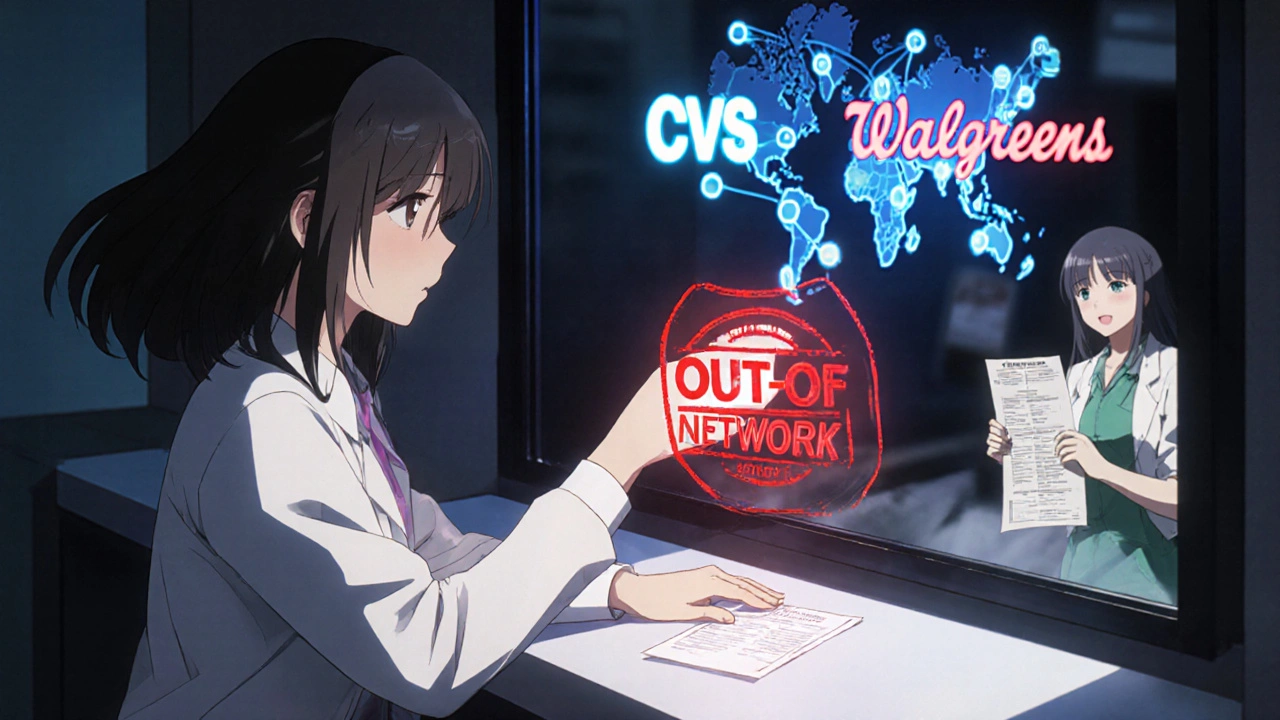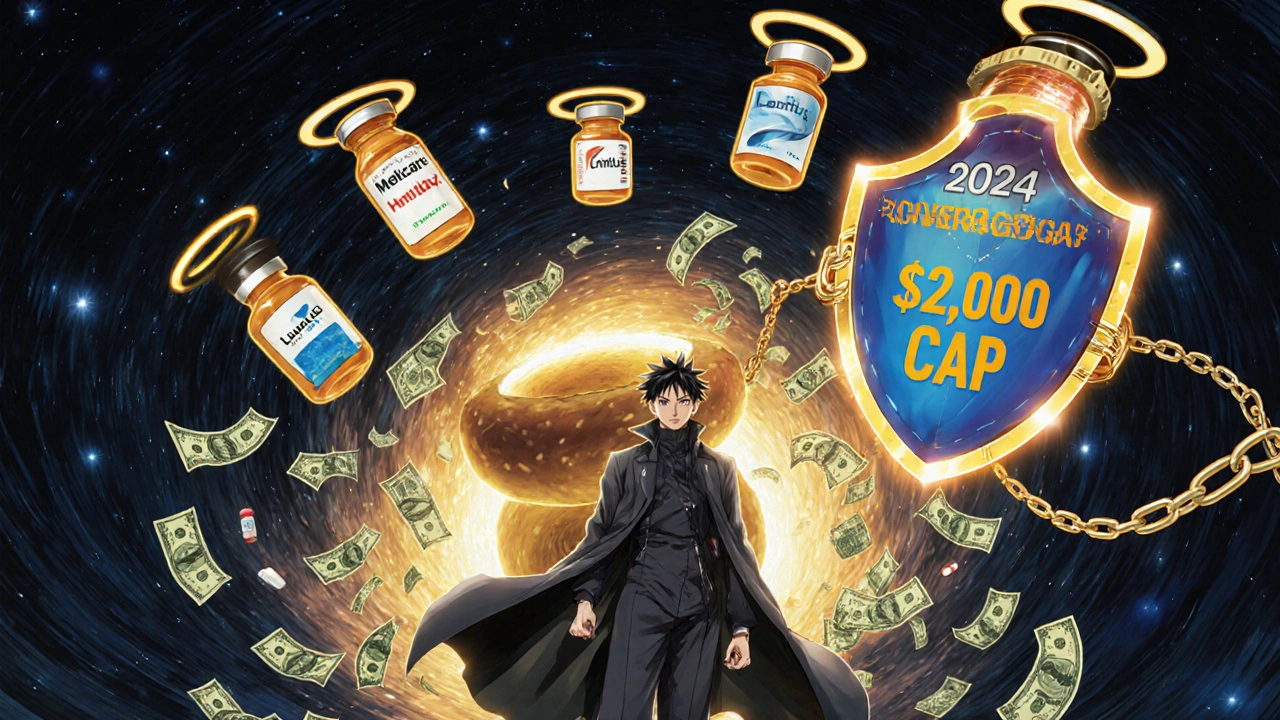Knowing your prescription insurance covers your meds isn’t enough. You need to know how much you’ll actually pay, when you’ll pay it, and what might block you at the pharmacy counter. Too many people assume their plan works the same as last year - and get hit with surprise bills. In 2023, 63% of Marketplace plan shoppers didn’t check if their specific drugs were covered until after signing up. By then, it was too late. Don’t be one of them.
Is My Medication on the Formulary?
Every insurance plan has a list of approved drugs called a formulary. This isn’t just a nice-to-know document - it’s your roadmap to what’s covered and what’s not. If your medication isn’t on it, you’ll pay full price. And no, your doctor’s prescription doesn’t override this.Formularies are split into tiers. Tier 1 is usually generics - think metformin or lisinopril - with a $10 copay. Tier 2 is preferred brand names, like Lipitor or Humira (if available as preferred), costing around $40. Tier 3 is non-preferred brands - often newer or more expensive - with a $100 copay. Tier 4 is specialty drugs: cancer treatments, biologics, or rare disease meds. These can cost $1,000 or more per prescription, and you might pay 25-33% of the total cost as coinsurance.
Check your formulary by name, not by brand. If you take insulin, for example, ask: “Is Humalog covered, or just NovoLog?” Even if they’re the same drug class, coverage can differ. Medicare Part D plans and Marketplace plans both use tiered formularies, but the drugs on each tier vary wildly between insurers.
What’s My Out-of-Pocket Cost Before Coverage Starts?
Some plans have a deductible - meaning you pay 100% of your drug costs until you hit a certain amount. In 2023, Bronze Marketplace plans averaged a $6,000 deductible. That means if you take a $300 monthly medication, you’d pay $3,600 out of pocket before your plan starts helping.Gold and Platinum plans often have lower or no drug deductibles. A Silver plan might have a $150 deductible for prescriptions. That’s a huge difference. If you take three or more maintenance meds, going for a higher-tier plan could save you thousands. CMS modeling shows someone on 12 monthly prescriptions saves $1,842 a year with a Gold plan versus a Bronze one - even with higher premiums.
Don’t just look at the monthly premium. Look at the total cost: premium + deductible + copay/coinsurance. A $450 annual premium sounds cheap, but if you’re paying $9,450 out of pocket max, it’s not a bargain.
Are There Prior Authorization or Step Therapy Requirements?
Just because your drug is on the formulary doesn’t mean you can get it right away. Many plans require prior authorization - your doctor has to call the insurer and prove the drug is medically necessary. This can delay your refill by days or weeks.Even worse is step therapy. This means you have to try cheaper drugs first - even if they didn’t work for you before. For example, your plan might force you to try two generic antidepressants before approving your prescribed brand. If you’ve already tried those and they failed, you’ll need your doctor to appeal. That process can take 30 days or more.
28% of Medicare Part D prescriptions require prior authorization. 37% of specialty drugs in Marketplace plans require step therapy. Ask your plan: “What drugs on my list need pre-approval or trial of alternatives?” Get it in writing. Don’t wait until you’re at the pharmacy counter.
Which Pharmacies Are In-Network?
You might think any pharmacy will do. Wrong. 78% of Marketplace plans restrict coverage to specific pharmacy networks. If you use an out-of-network pharmacy, your copay could jump 37% higher.Some plans only cover CVS, Walgreens, or Walmart. Others use smaller regional chains. If you use a mail-order pharmacy for maintenance drugs, confirm it’s in-network. Medicare Part D plans often have preferred mail-order partners. Using them can cut your costs in half.
Check your plan’s website for a pharmacy locator. Don’t rely on the one on your insurance card - networks change. A friend’s pharmacy might be in-network for them but not for you. Always verify before filling a new script.

What’s the Coverage Gap (Donut Hole) for Medicare Part D?
If you’re on Medicare, you need to understand the coverage gap - commonly called the “donut hole.” In 2024, once your total drug costs (what you and your plan paid) hit $5,030, you enter the gap. You pay 25% of the cost until you hit $8,000 in total spending. Then catastrophic coverage kicks in.But here’s the key: starting in 2025, the donut hole is gone. The Inflation Reduction Act eliminates it entirely. You’ll pay 25% of your drug costs all year long, no matter how much you spend. That’s a huge change.
Also, insulin is now capped at $35 per month under Medicare Part D. That applies to all brands - Humulin, Lantus, NovoLog. If you’re paying more than that, your plan isn’t following the law. Call them. Demand the cap.
What’s the Out-of-Pocket Maximum?
Every plan has a yearly cap on what you pay for covered drugs. Once you hit it, your plan pays 100%. For Bronze plans, it’s $9,450. For Platinum, it’s $3,050. That’s a massive difference.If you take expensive meds - say, a $4,200 monthly specialty drug - you might hit that cap fast. But if you don’t know it exists, you’ll keep paying. One Reddit user thought their Silver plan covered their specialty drug at $500 copay. Turns out, the plan had a $500 monthly cap. They got billed $3,700 because they didn’t know the cap existed.
Ask: “What’s the maximum I’ll pay for prescriptions in a year?” Then add up your meds. If you’re close to the cap, a higher-tier plan might be worth it.
Can I Switch Plans Mid-Year?
Generally, no. You’re locked in until next open enrollment. But there are exceptions. If your drug gets removed from the formulary, your pharmacy closes, or your plan changes its network, you can switch. That’s called a Special Enrollment Period.Medicare Part D beneficiaries can switch once a year during the Annual Election Period (October 15-December 7). If you’re on a Marketplace plan, open enrollment is November 1 to January 15. But if you find out your insulin is no longer covered in February, you can’t wait until November. Contact your insurer immediately. You may qualify for a special change.

What’s Changing in 2025?
The biggest shift is the Medicare Part D overhaul. The $2,000 annual out-of-pocket cap kicks in. That means no matter how many expensive drugs you take, you’ll never pay more than $2,000 in a year. That’s a game-changer for people with cancer, MS, or rare diseases.Also, Medicare will start negotiating prices for 20 high-cost drugs. The first 10 - including diabetes, heart failure, and blood thinners - will have lower prices by 2026. That could drop premiums by 10-15%.
Private insurers are following suit. By 2026, 70% of new Marketplace plans will offer value-based insurance - meaning lower copays for drugs that treat chronic conditions like diabetes or high blood pressure. If you take one of those meds, you might pay $0 or $5 instead of $40.
How to Check Your Coverage Right Now
Don’t wait. Here’s how to act:- Write down every medication you take - name, dose, frequency.
- Go to your insurer’s website or call customer service. Ask for the current formulary.
- Search each drug by name. Note the tier and cost.
- Check if prior authorization or step therapy applies.
- Find your in-network pharmacies. Confirm your local one is on the list.
- Calculate your yearly cost: (copay × 12) + deductible + coinsurance.
- Compare to other plans during open enrollment.
Spending 20 minutes on this saves the average person $1,147 a year. That’s a free vacation. Or a new pair of shoes. Or a month’s worth of insulin without stress.
What if my drug isn’t on the formulary?
Ask your doctor to request a formulary exception. They can submit a letter explaining why you need that specific drug - maybe because others caused side effects or didn’t work. If approved, your plan must cover it. If denied, you can appeal. Don’t give up - many exceptions are granted.
Can I use a coupon or discount card with my insurance?
Usually not. Most manufacturer coupons can’t be stacked with insurance. If you use the coupon, your pharmacy may report the full price to your insurer, which doesn’t count toward your deductible or out-of-pocket max. Some plans allow coupons for non-covered drugs, but check first. For Medicare Part D, coupons are never allowed. Use the plan’s own discounts instead.
Do generic drugs work the same as brand names?
Yes. The FDA requires generics to have the same active ingredient, strength, dosage, and effectiveness as the brand. The only differences are filler ingredients, color, or shape - none of which affect how the drug works. If your insurance pushes a generic, take it. You’re not losing quality.
Why does my copay change every month?
Your plan might use a tiered pricing system where the cost shifts based on how much you’ve spent. For example, you pay $10 until you hit your deductible, then $40 after. Or your drug’s price increased and your insurer adjusted the tier. Call your plan and ask for a breakdown. They’re required to explain it.
What if I can’t afford my copay?
Many drug manufacturers offer patient assistance programs. Nonprofits like NeedyMeds and RxAssist can help you find free or low-cost options. For Medicare, the Extra Help program reduces costs for low-income beneficiaries. Apply even if you think you don’t qualify - the income limits are higher than most people think.
Next Steps
If you’re on a Marketplace plan, log into HealthCare.gov before January 15. Use the plan comparison tool. Enter your exact medications and preferred pharmacy. See what each plan costs you - not just the premium. If you’re on Medicare, use Medicare.gov’s Plan Finder. Enter your drugs by NDC code (ask your pharmacist for it). Compare plans side by side.Don’t guess. Don’t assume. Don’t wait until you’re out of pills. Your health depends on knowing what your insurance really covers - and how much you’ll pay for it.


Melanie Taylor
November 16 2025OMG YES!!! This is so true!!! I just got hit with a $1,200 bill for my insulin last month and I thought my plan was 'comprehensive'... turns out they covered 'a' brand, not MY brand. 😭 I'm still mad. Like... why do they do this???